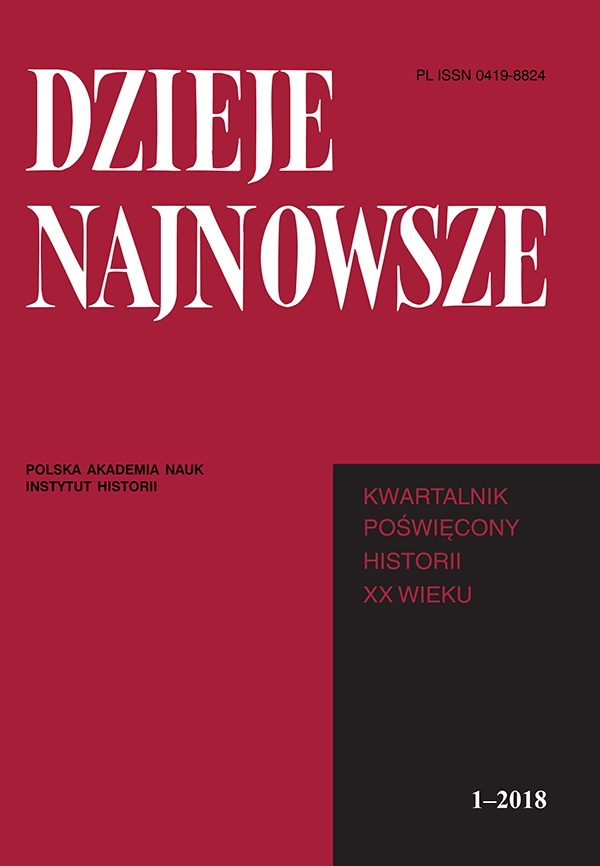DALEJ JEST NOC Jew Killing Pole Accusations Debunked Gontarczyk

Czy Bracia Hryc Byli Polskimi Mordercy Zydow?, by Piotr Gontarczyk. 2018
Bogus Accusations of Poles Killing Jews: On the Misuse of Archival Data Barbara Engelking
WERE THE HRYC BROTHERS POLISH MURDERERS OF JEWS? is the title of this Polish-language investigation Piotr Gontarczyk, a Polish historian. He addresses Barbara Engelking and her portrayal of Polish peasants as “volunteers in the murder of Jews.” The issue surrounds Jan Kaminski and the brothers Joseph and Aleksander Hryc, of Bielski County of the Bialystok Voivodship, who allegedly robbed and killed tens of fugitive Jews. The narratives have been part of trials in Poland, of the accused Polish killers, conducted in the late 1940s and early 1950s.
BLAMING POLES FOR ACTS PERFORMED UNDER DURESS
Jan Kaminski was a night watchman at Chojewo, and he did turn over three captured Jews to the German gendarmes. He did so in fulfillment of a German order (p. 208), which required Polish village leaders to turn-in not only fugitive Jews, but also fugitive forced laborers and escaped POWs. Polish villagers obeyed in fear of the Germans, yet Barbara Engelking, divorcing herself from reality, portrays the Poles as acting voluntarily!
THE ELEMENTARY CONFUSION IN JEWISH ACCUSATORY TESTIMONIES
A Jewish accusation is made, and then there is a flood of “corroborating” Jewish claims. Many of them are based on hearsay. (p. 219). Moreover, they copy each other, even repeating the same mistakes (“Rycz” for Hryc: e. g, p. 208).
Jan Kaminski and the Hryc brothers have been conflated in Jewish testimonies, even though they did not even know each other. (p. 209, 211). In fact, this totally-artificial connection is one of the main factors discrediting the Pole-accusing Jewish claims. (pp. 214-215).
Contrary to Barbara Engelking’s statement, Jewish accuser Wolf Alpern did not recognize the Hryc brothers at the trial. (p. 209). Neither did the other Jewish accusers. The prosecutor himself withdrew the charges, thus tacitly admitting that they were not credible. (p. 216).
Gontarczyk suggests that the Jewish accusations were driven by the trauma of the Holocaust, by vendettas against Poles who opposed them during the period of Jewish-Soviet collaboration (1939-1941), and by their vindictiveness towards Poles who refused to help them during Nazi rule. (p. 220).
ACCUSATORY JEWISH CLAIMS: MAJOR INCONSISTENCIES
Kaminski and the Hryc brothers are supposed to have knocked the Jews out with axe blows to the head, and then dumped the unconscious Jews into the Nurzec river to drown. (p. 203). This is contradicted by another version of the story, which insists that the same Jewish victims were tied up and thrown into the river to drown. (p. 207). So which is it?
There are allegations of Jewish victims with hacked axes, or beheaded. The Polonophobic tales grow taller and taller. One of them even has a Jew, dead a week in the river, whose head was found, still attached to the body, hanging on a strip of skin. (p. 204).
At the Polish postwar trial, Jewish accusers Lejbko Prybut and Jankiel Rubin insisted that they could locate the burial sites of the supposedly-murdered Jews. Despite being given two hours to do so, they could not. (p. 205).
Jewish accuser Lejb Trus has put up a big story wherein he stumbled upon the Hryc brothers, who allegedly tried to rob and strangle him–in a battle lasting two hours. (pp. 205-206). Thanks to his strong swimming skills, Lejb allegedly managed to shake off his attackers and swim across the Nurec river to safety. (p. 206). His story falls apart when it is realized that, except in spring, the Nurec river is only knee-deep! (p. 208).
The Jewish accusers of the Hryc brothers do not even get basic facts straight. They say that the Hryc brothers lived near the Nurec river. The Hryc brothers actually lived two kilometers from it. (p. 208). Moreover, during the German occupation, they stayed with a relative at the village of Swirydy, which is located some 15 kilometers away. (p. 209).
DUPLICATE LISTINGS, AND OTHER DEVICES FOR FABRICATING THE POLISH KILLING OF JEWS
Barbara Engelking goes out of her way to maximize blame on the Poles. In her JEST PIEKNE SLONECZNY DZIEN (SUCH A BEAUTIFUL SUNNY DAY), she lists the very same Jew-killing, only with different details, no less than four different times. (p. 204). This misleads the reader into thinking that this is discussion of four different incidents!
In her DALEJ JEST NOC, Engelking accuses a Polish rescuer of Jews, Edward Malinowski, of denouncing tens of Jews. Fact is, the court cleared him of the charge. (pp. 217-218). Likewise, in her DALEJ JEST NOC, Engelking writes of Jews denounced by Poles in the village of Markowizna. There is only one problem: There is no such village in the area! (p. 217).
Finally, Engelking enlists Belarussian Jew-killers as Poles. This is true, for example, of the Hryc brothers themselves. (pp. 223-224).
CONCLUSION
Barbara Engelking is a fraud-or close to it. She plays fast and loose with the archival data, and always does so in a Pole-accusatory direction. As long as the Jewish claimants are the “voices of victims” that fit her narrative, that is all that matters.
To see a series of truncated reviews in a Category click on that Category:
- All reviews
- Anti-Christian Tendencies
- Anti-Polish Trends
- Censorship on Poles and Jews
- Communization of Poland
- Cultural Marxism
- German Guilt Dilution
- Holocaust Industry
- Interwar Polish-Jewish Relations
- Jewish Collaboration
- Jewish Economic Dominance
- Jews Antagonize Poland
- Jews Not Faultless
- Jews' Holocaust Dominates
- Jews' Holocaust Non-Special
- Nazi Crimes and Communist Crimes Were Equal
- Opinion-Forming Anti-Polonism
- Pogrom Mongering
- Poland in World War II
- Polish Jew-Rescue Ingratitude
- Polish Nationalism
- Polish Non-Complicity
- Polish-Ukrainian Relations
- Polokaust
- Premodern Poland
- Recent Polish-Jewish Relations
- The Decadent West
- The Jew as Other
- Understanding Nazi Germany
- Why Jews a "Problem"
- Zydokomuna